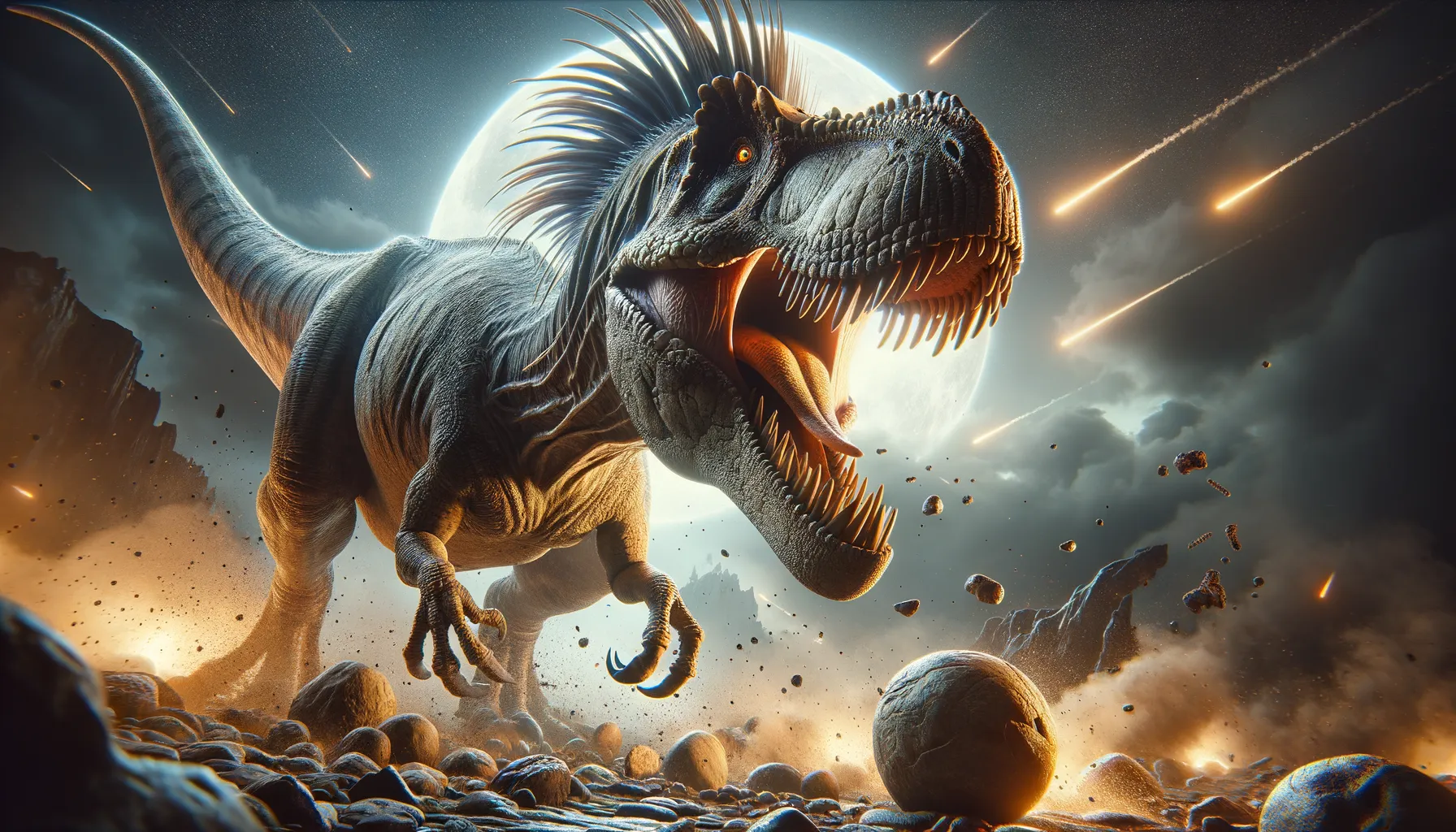
Lythronax
Explore the King of Ancient Predators!
Period
Cretaceous
Length
Around 24 feet long.
Height
Approximately 8 feet tall at the hips.
Weight
Roughly 2.5 tons.
Lythronax is a fascinating theropod dinosaur, often referred to as the 'Gore King'. It belonged to the Tyrannosaurid family, showcasing a mix of primitive and advanced features that provided insights into the evolution of other large carnivores, like the famous Tyrannosaurus rex. Lythronax roamed what is now North America around 80 million years ago, showcasing a complex blend of predatory adaptations and anatomical features.
Diet
Lythronax was a carnivore, primarily feeding on other large dinosaurs. Its powerful jaws and sharp teeth were adept at tearing flesh, allowing it to take down sizable prey. It likely scavenged when the opportunity arose, similar to modern large predators.
Hunting
Lythronax hunted using a combination of stealth and sheer strength. It likely relied on ambush tactics, given its robust and muscular build, to overpower large herbivorous dinosaurs. Its developed senses aided in tracking prey across its territory.
Environmental challenges
Lythronax faced numerous environmental challenges, including competition with other theropods for food resources. Fluctuating climates of the Late Cretaceous could have affected its hunting and survival strategies. Additionally, changes in prey populations might have forced dietary adaptations. Erosional and flood events posed significant threats to its habitats.
Speed
Moderate, based on its robust build.
Lifespan
Estimated around 20-30 years.
First discovery
Discovered in Utah in 2009.
Fun Facts
- Lythronax is known as the 'King of Gore' because its name means exactly that in Greek.
- It roamed the Earth around 80 million years ago during the Late Cretaceous period.
- Lythronax is considered to be one of the earliest known members of the tyrannosaur family.
- This dinosaur was discovered in what is now Utah, specifically in the Grand Staircase-Escalante National Monument.
- Lythronax had forward-facing eyes, giving it excellent depth perception for hunting.
- It was about 24 feet long, which made it a formidable predator of its time.
Growth and Development
Lythronax experienced significant growth spurts during its juvenile years, similar to other large theropods. As it matured, its body mass increased rapidly, leading to a more powerful build. Skeletal remains indicate rapid bone growth and later development of certain cranial features. These changes helped it become a proficient predator by adulthood.
Habitat
Lythronax inhabited lush floodplains and forested environments, rich in diverse flora and fauna. Its territory likely included river systems, providing access to fresh water and attracting various prey. Dense vegetation offered cover for ambush-style hunting tactics. This environment facilitated a dynamic ecosystem conducive to its predatory lifestyle.
Interaction with other species
Lythronax likely had frequent interactions with both prey and rival predators. Its presence would have been a dominant force, impacting the behavioral patterns of other species. Defense mechanisms of herbivorous dinosaurs evolved in response to such predators. Social dynamics among top predators included competition for territory and resources.
Natural lifespan
Lythronax naturally lived up to 30 years.
Reproduction
Lythronax reproduced by laying eggs, likely in nests made through scrape digging. Parental care might have been practiced to some extent, protecting eggs from scavengers. Hatchlings were vulnerable to predators, leading to high mortality rates among young. Sexual maturity was reached within several years, ensuring the continuation of the lineage despite early losses.
Social behaviour
Lythronax might have been a solitary predator, although some evidence suggests potential pack behavior in hunting scenarios. Territories were likely marked and defended against intrusions from rival males. Social interactions, if any, were mainly during the breeding season. Vocalizations and physical displays could have been used for communication.
Fossil locations
Fossils of Lythronax were primarily found in southern Utah, especially within the Wahweap Formation. These locations have provided extensive insight into the diversity and adaptation of late Cretaceous theropods. The fossils have contributed significantly to understanding tyrannosaur evolution. The preservation state of these fossils has been notable due to sedimentary conditions in the region.
